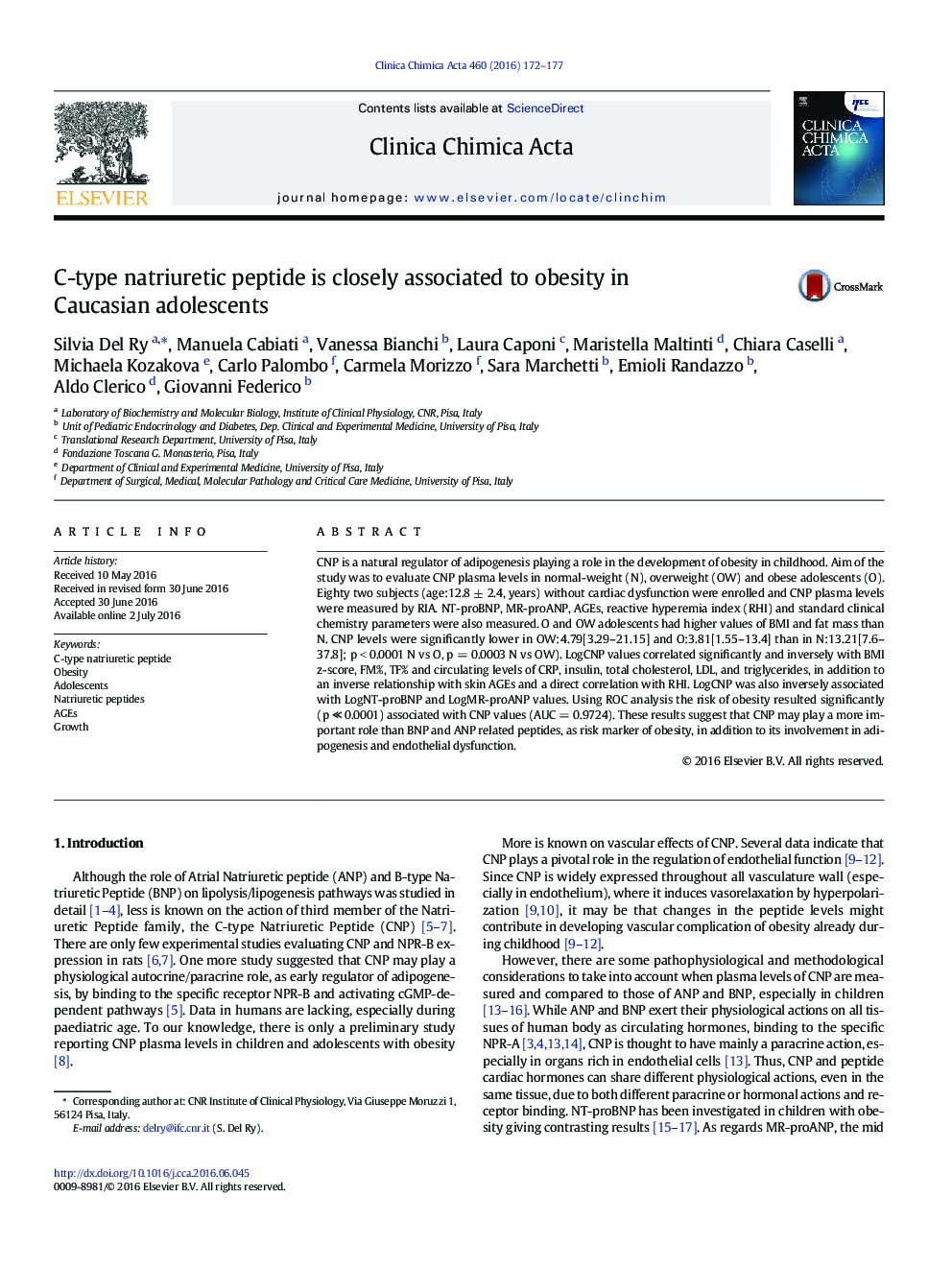| Article ID | Journal | Published Year | Pages | File Type |
|---|---|---|---|---|
| 1965043 | Clinica Chimica Acta | 2016 | 6 Pages |
•CNP is an important natural regulator of adipogenesis.•CNP plays a role in the development of obesity in paediatric age.•Independent association between CNP and obesity in Caucasian adolescents•Skin AGEs and CRP were independent determinants of low blood CNP in obese adolescent.•A reduction in CNP suggests an altered endothelial function.
CNP is a natural regulator of adipogenesis playing a role in the development of obesity in childhood. Aim of the study was to evaluate CNP plasma levels in normal-weight (N), overweight (OW) and obese adolescents (O). Eighty two subjects (age:12.8 ± 2.4, years) without cardiac dysfunction were enrolled and CNP plasma levels were measured by RIA. NT-proBNP, MR-proANP, AGEs, reactive hyperemia index (RHI) and standard clinical chemistry parameters were also measured. O and OW adolescents had higher values of BMI and fat mass than N. CNP levels were significantly lower in OW:4.79[3.29–21.15] and O:3.81[1.55–13.4] than in N:13.21[7.6–37.8]; p < 0.0001 N vs O, p = 0.0003 N vs OW). LogCNP values correlated significantly and inversely with BMI z-score, FM%, TF% and circulating levels of CRP, insulin, total cholesterol, LDL, and triglycerides, in addition to an inverse relationship with skin AGEs and a direct correlation with RHI. LogCNP was also inversely associated with LogNT-proBNP and LogMR-proANP values. Using ROC analysis the risk of obesity resulted significantly (p ≪ 0.0001) associated with CNP values (AUC = 0.9724). These results suggest that CNP may play a more important role than BNP and ANP related peptides, as risk marker of obesity, in addition to its involvement in adipogenesis and endothelial dysfunction.
Graphical abstractFigure optionsDownload full-size imageDownload as PowerPoint slide
